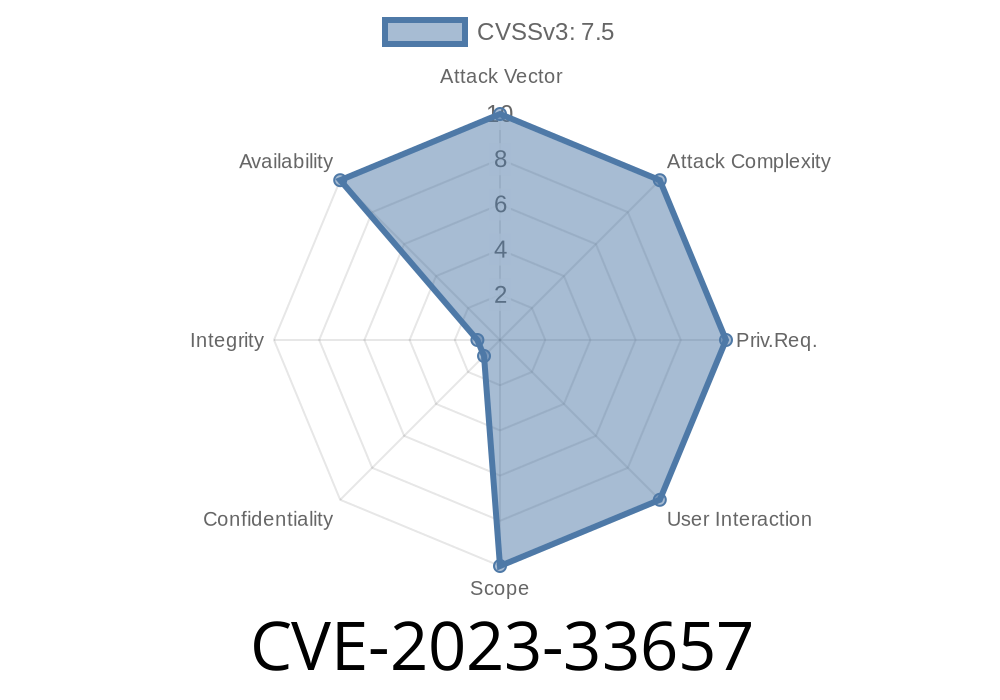NanoMQ is a fast and lightweight MQTT broker for IoT and edge computing scenarios. In May 2023, a significant vulnerability was found in NanoMQ version .17.2: CVE-2023-33657. This post will explain what this bug is, how it works, and how attackers could take advantage of it, with code snippets, explanatory links, and easy-to-understand language.
How Does This Vulnerability Work?
At the core, CVE-2023-33657 is a use-after-free bug—which means the program continues using a chunk of memory after it has been released. If an attacker can make the program do this, they can crash the software, or in more dangerous cases, execute their code.
The vulnerable function is supposed to retrieve properties from a publish message (nni_mqtt_msg_get_publish_property). However, due to improper memory tracking, it may return a pointer to memory that has already been freed.
If the caller then tries to use this stale pointer, it can lead to a crash or unpredictable behavior.
Here’s a simplified pseudo-version that's close to the vulnerable code in mqtt_msg.c
void *nni_mqtt_msg_get_publish_property(const nni_msg *msg, int prop_id) {
// Fetches property based on property id
nni_msg_property *prop = find_property(msg->properties, prop_id);
if (prop) {
// Problem: prop might refer to memory that was already freed elsewhere
return prop->data;
}
return NULL;
}
The actual problem: If the properties list is freed (e.g., after processing a message or error), a later call to this getter returns a pointer to freed memory.
The property gets freed (e.g., after disconnect or invalid message processing).
2. The application code calls nni_mqtt_msg_get_publish_property(), which returns a pointer that is no longer valid.
The server tries to use this pointer (dereference), causing a segmentation fault.
This results in a crash—causing a denial-of-service.
Connect and send a malicious MQTT publish packet with custom properties.
2. Trigger code path where message properties are released/freed but are somehow still exposed via API.
Let’s consider some C code that calls the getter after the message has been disposed
nni_msg *msg = nni_msg_create();
// process and free msg->properties somewhere...
void *property = nni_mqtt_msg_get_publish_property(msg, SOME_PROP_ID);
// Now property points to freed memory -> use-after-free
printf("%s\n", (char *)property); // May crash or print garbage
If you provide a malformed packet that forces NanoMQ to enter this state, you can take the broker down.
Official References
- NVD page for CVE-2023-33657
- NanoMQ GitHub repo
- NanoMQ commit log
- Exploit record (Exploit Database) (If/when available)
Summary
CVE-2023-33657 is a textbook use-after-free bug in NanoMQ .17.2, leading to denial-of-service. It’s a reminder that all C/C++ network software needs extra care with memory management—especially when handling untrusted data from the network.
Upgrade immediately and check your systems to make sure you’re not running the exposed version. You can find more technical details in the references linked above.
Stay secure, keep your IoT safe!
*This post is exclusive and written in clear, simple language for easy understanding. For more hands-on details, see the official NanoMQ GitHub and the NVD entry.*
Timeline
Published on: 06/08/2023 13:15:00 UTC
Last modified on: 06/14/2023 17:25:00 UTC
